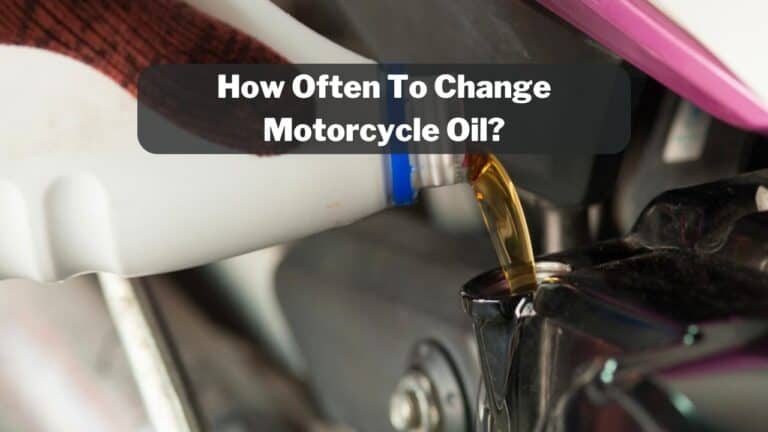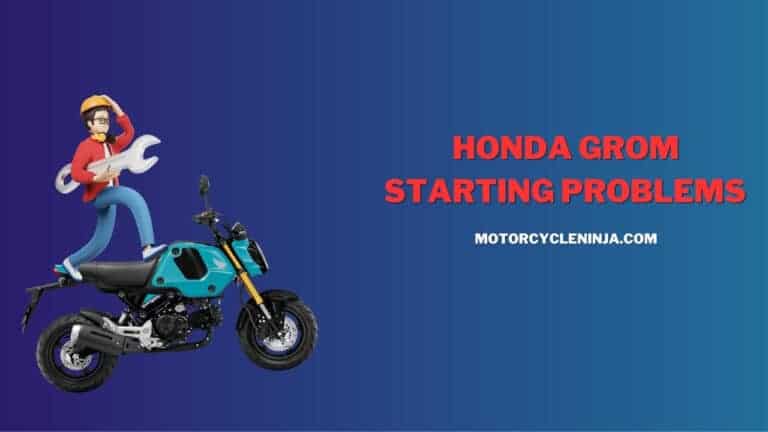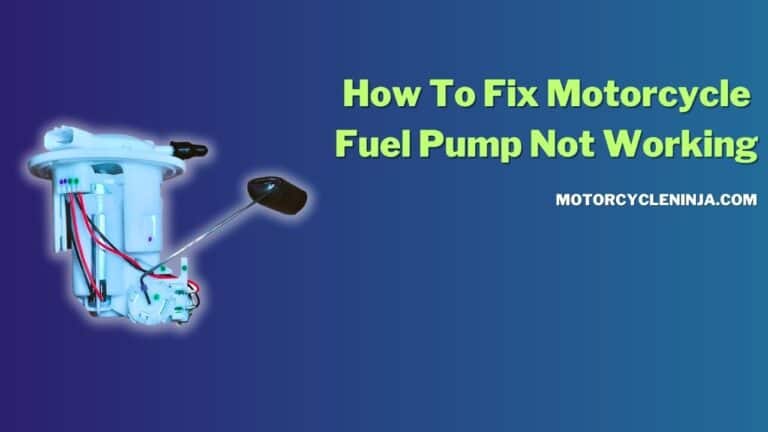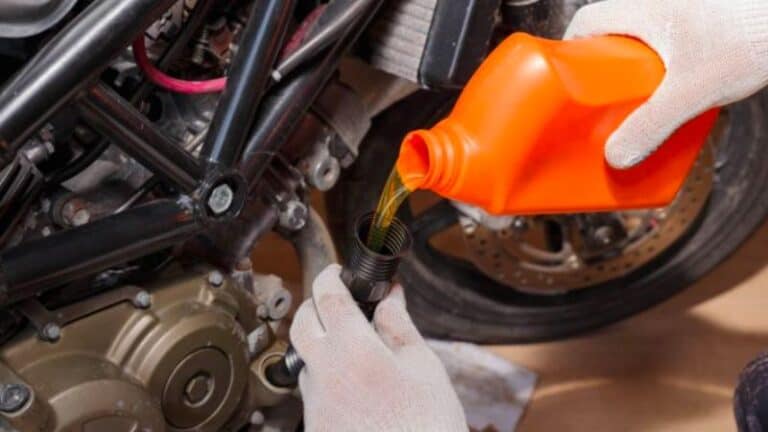6 Reasons A Motorcycle Accelerates On Its Own – (Easy Fixes!)
A motorcycle isn’t considered a safe mode of transportation, and when it starts accelerating itself, it increases the risk factor. My name is Kevin, and I’m a mechanical engineer and avid motorcycle enthusiast.
One of my friends told me that his motorcycle accelerates by itself, which makes him unstable while riding in traffic. Because of my engineering background, I know how motorcycle throttle system works.
In this guide, we’ll understand the various reasons why a motorcycle accelerates on its own.
So, why does a motorcycle accelerate on its own? A motorcycle accelerates on its own when the throttle cable becomes sticky, insufficient throttle cable free play, a faulty carburetor, a bad throttle position sensor, and a faulty ECU.
In most cases, the problem occurs due to a faulty throttle cable and insufficient throttle free play. Over time, the dust particle accumulates inside the throttle cable’s plastic casing and forms a sticky layer that prevents the free movement of the throttle wire. The issue can be resolved by lubricating the throttle cable.
Click here to buy a throttle cable lubricator kit from Amazon
Table of Contents
Why Does A Motorcycle Accelerate By Itself
You’re reading this guide because your motorcycle is accelerating on its own. This problem can lead you to a significant accident because your throttle bar is not under your control.
1. Sticky Throttle Cable

If your motorcycle accelerates even when you release the throttle bar, this is the first sign of a sticky throttle cable.
If you look at the design of throttle control, you will see a strong metal wire inside a plastic casing. The plastic casing is tightened on the metal body, but the metal wire inside the cable can freely move.
When you twist the throttle cable, it opens the air throttle valve and allows more airflow inside the carburetor. Hence, your motorcycle engine produces more power, and the motorcycle accelerates.
But, due to dust and debris, the throttle cable clogs and becomes sticky. So, when you twist the throttle bar, your motorcycle accelerates, but the metal wire doesn’t return to its original position when you release the throttle bar.
As a result, your motorcycle keeps accelerating on its own. That’s why regular cleaning and lubrication is essential. So, lubricate your throttle cable regularly to fix the self-acceleration of the motorcycle.
2. Insufficient Free Play
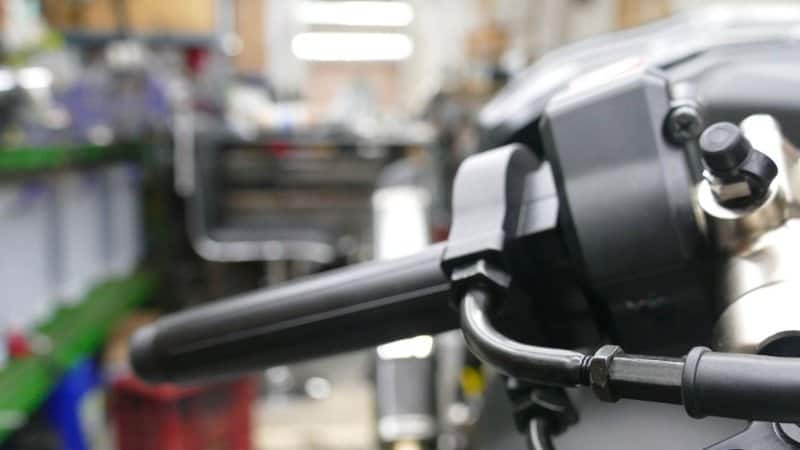
Your motorcycle clutch lever and throttle bar come with some free play. This excess free play provides better control of the engine’s functioning.
If your throttle bar has insufficient free play, this will keep the throttle wire under tension every time, and your motorcycle will accelerate on its own.
For better performance and smoother riding, your motorcycle clutch lever should have at least 10mm to 13mm free play at the end, while the motorcycle throttle lever should rotate at least 2mm to 3mm freely.
3. Defective Throttle Cable
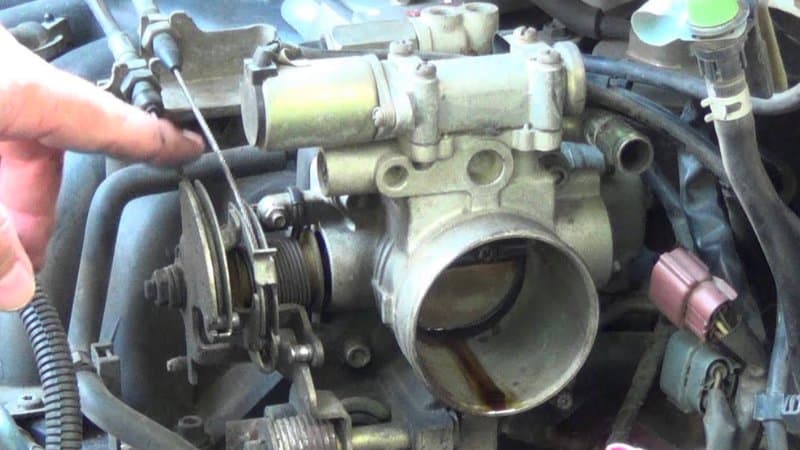
A defective throttle cable could be another reason why your motorcycle is accelerating on its own. As we know, everything has a limited lifespan, and if you haven’t changed your throttle cable for more than 12 months, please replace it.
You’ll notice a much smoother riding experience after changing your throttle cable. I usually replace my throttle cable every year. You can find a universal throttle cable online or visit the nearest dealer to replace it.
Click here to buy Universal throttle cable from Amazon. (works with Honda, Kawasaki, Yamaha, Suzuki, etc.)
4. Faulty Carburetor
A motorcycle carburetor mixes the air and fuel before supplying them to the engine cylinder. It’s a very important part of your motorcycle responsible for power generation. That’s why automobile mechanic recommends regularly cleaning and maintaining a motorcycle carburetor.
Over time, the passways of the carburetor get clogged due to bad fuel quality and affect acceleration. If the fuel line passway is blocked, it creates problems in acceleration, and your motorcycle feels sluggish.
Also, a faulty carburetor can create other problems like auto-acceleration. Replacing the carburetor can fix the self-acceleration on your motorcycle.
Click here to check the price of the Mikuni carburetor from Amazon
5. Bad Throttle Position Sensor
If your motorcycle is fuel-injected (it has no carburetor), a sensor is installed on the throttle valve to measure its position. If this throttle position sensor is faulty, it will send false data to ECU, which can lead to self-acceleration.
These are some common signs of a faulty throttle position sensor:
- Jerking
- Stalling
- Auto Acceleration
- Hesitation while accelerating.
- Intermittent check engine light.
If your motorcycle shows any of the above symptoms, please get your throttle position sensor tested by a professional mechanic. If your throttle position sensor (TPS) is faulty, replace it immediately for hassle-free rides.
6. Faulty ECU
All modern motorcycles have an ECU (engine control unit) that takes data from various sensors and adjusts the fuel supply. ECU is the brain of your motorcycle that controls fuel supply, ABS, Traction Control, etc.
Your motorcycle will accelerate on its own if the ECU is faulty. It needs to be re-programmed by the vehicle manufacturer of any ASE-certified mechanic. So, please visit your nearest motorcycle garage for ECU remapping.
How To Fix A Motorcycle Accelerate By Its Own
In most cases, self-acceleration occurs due to bad throttle cable and throttle position sensors. If you haven’t serviced your motorcycle for a long, inspect your throttle cable and ensure it’s not sticky.
The throttle wire inside the plastic casing should move freely. If it’s not moving freely, lubricate it or buy a new throttle cable for your motorcycle.
The self-acceleration problem on your motorcycle will probably be solved by replacing the throttle cable.
Sometimes, a bad throttle position sensor (TPS) also creates problems in acceleration. Test your TPS and replace it if it’s faulty.
Follow this video tutorial on YouTube to test a motorcycle throttle position sensor (TPS) with a multimeter.
How To Handle A Self-Accelerating Motorcycle
Riding a motorcycle is fun until it functions according to your command. What happens when your motorcycle refuses to take your command? It could lead to a major road accident. Self-acceleration is a dangerous situation, and it should not happen.
Anyway, in this section, we will understand what to do when your motorcycle accelerates by itself.
If your motorcycle accelerates automatically while trying to stop, first, Don’t lose your calm and judge the situation.
If riding on a highway, try to spot and move toward the emergency lane as soon as possible to stop your motorcycle. Pull the clutch lever so no power is transmitted to the gearbox and your motorcycle stops in the safe zone.
After pulling the clutch lever, switch on the Kill Switch or rotate the ignition key to stop your motorcycle. Now inspect your throttle cable and twist bar and see if anything is visually out of place.
If your throttle cable returns to its original position after releasing the twist bar, it means there are some faults at the throttle position sensor (TPS) or ECU.
I advise you to call a tow truck and take your motorcycle to the nearest repair shop. The mechanic will diagnose the problem and fix it for you.
Conclusion
When you release the twist bar, the throttle wire should move freely inside the plastic casing and return to its original position. Otherwise, the throttle position valve remains open, and your motorcycle accelerates. Pouring a few drops of chain lubricant or engine oil will free up the stickiness, and self-acceleration will be fixed.
I hope you enjoyed reading this guide!
Follow the above steps to fix the self-acceleration problem. If it’s resolved, please let me know in the comment box.
